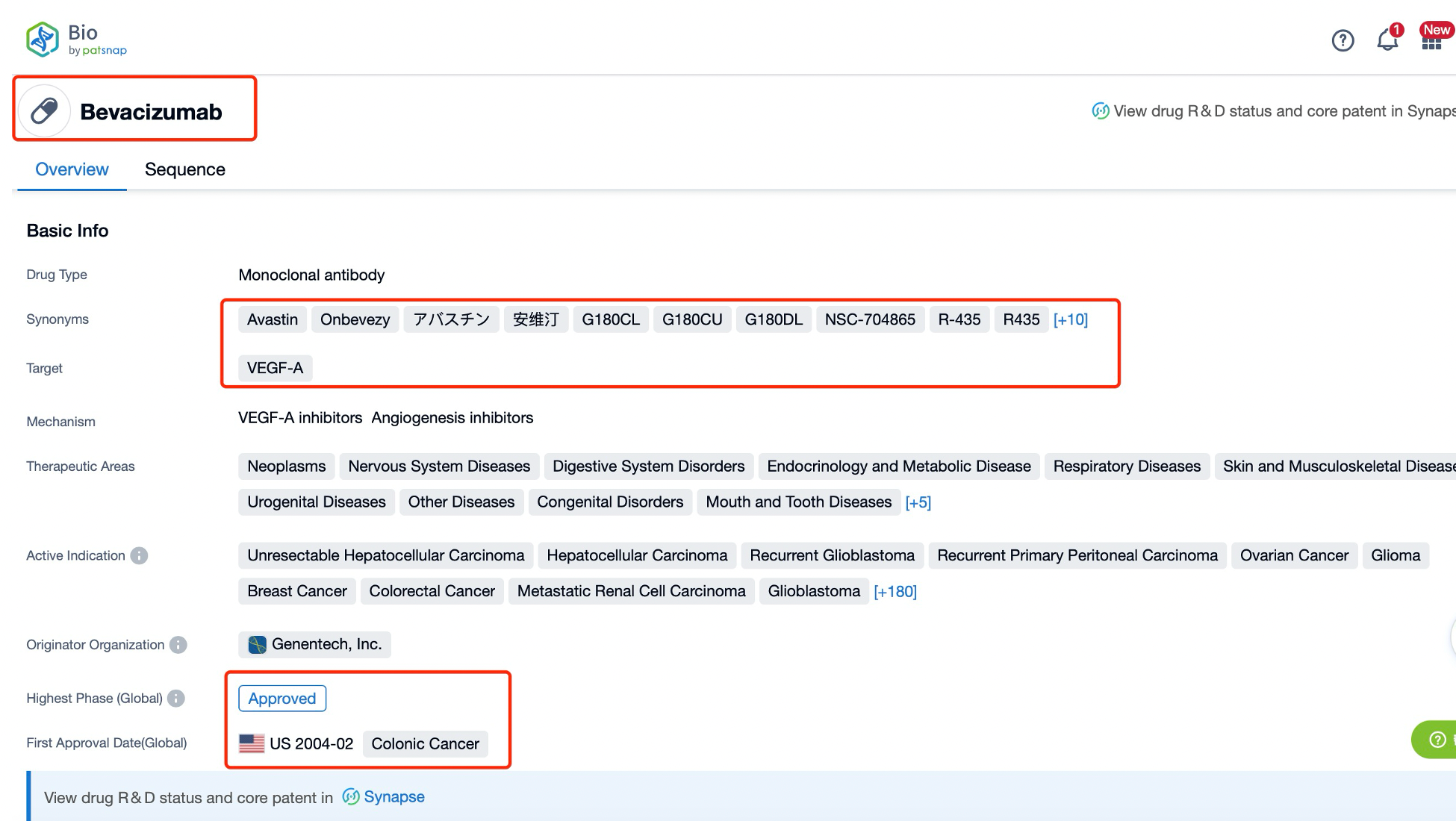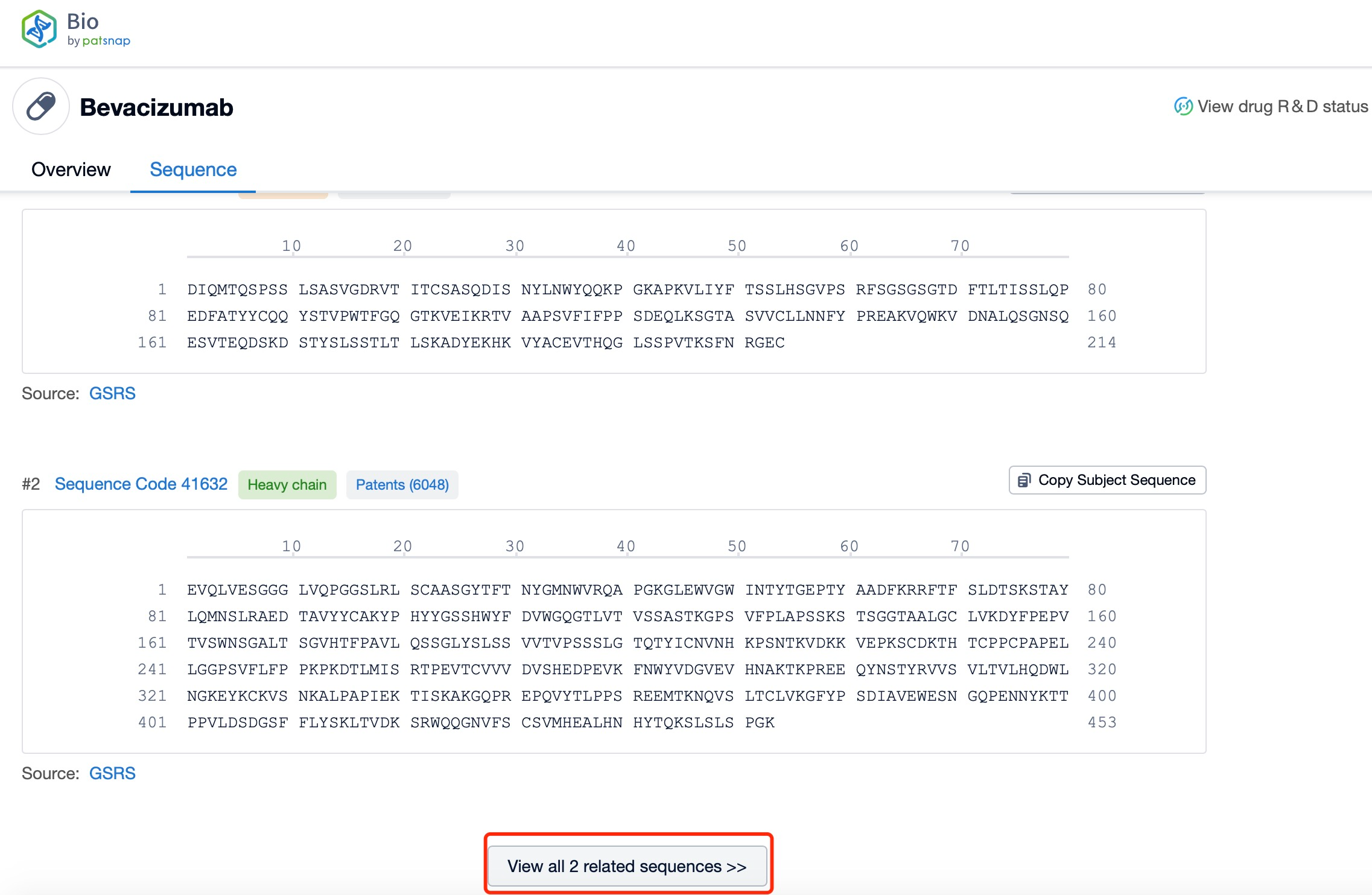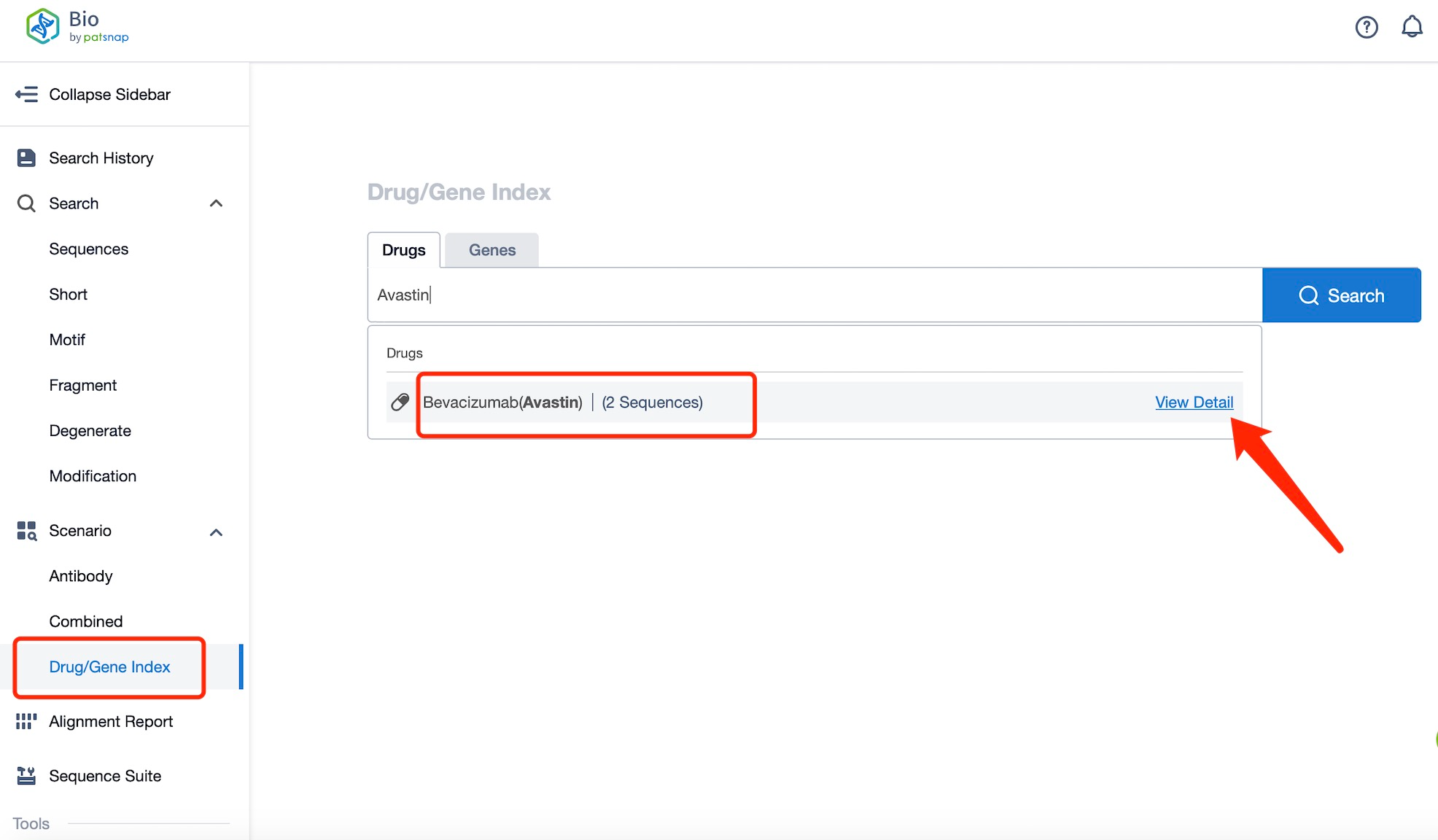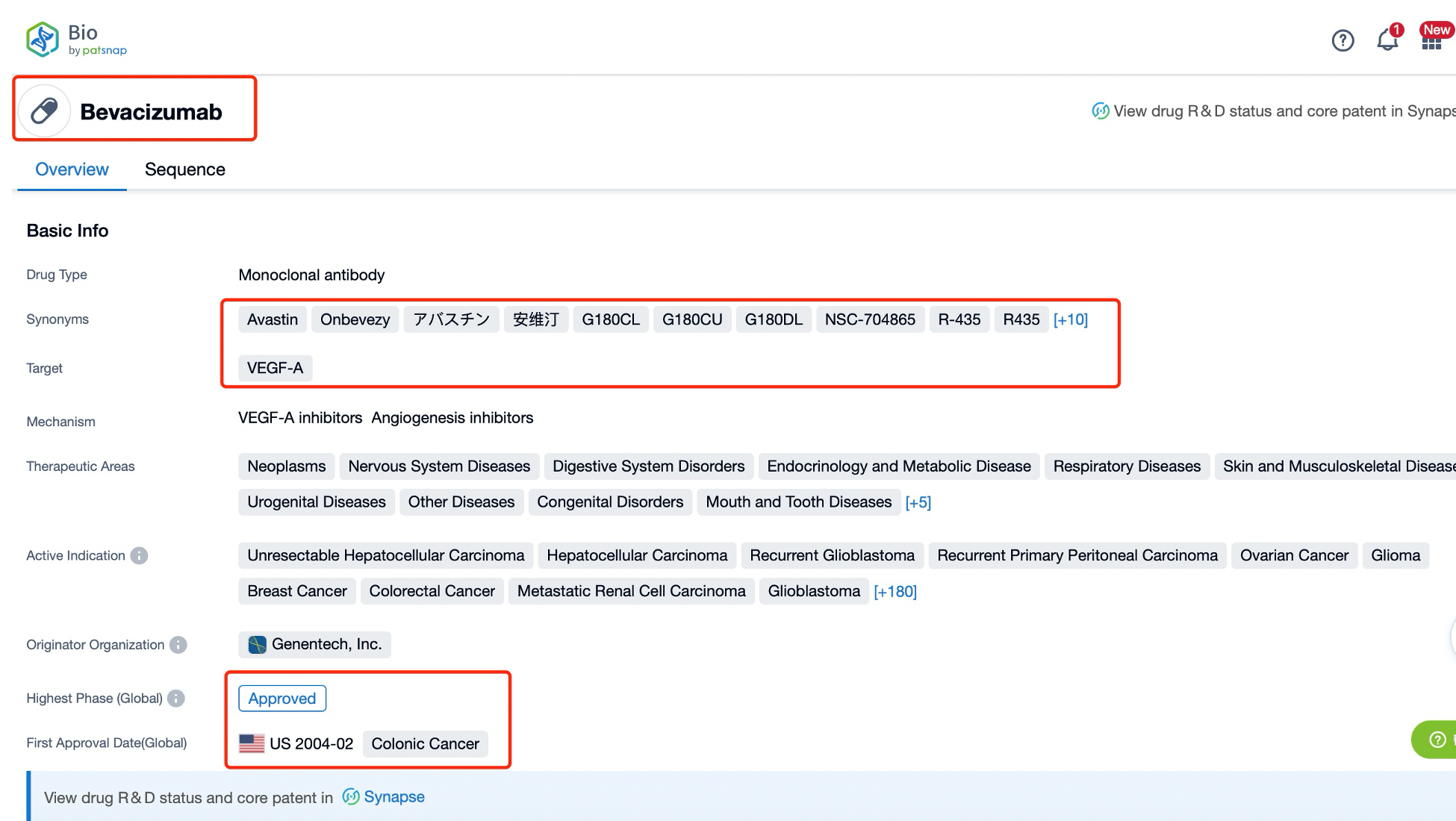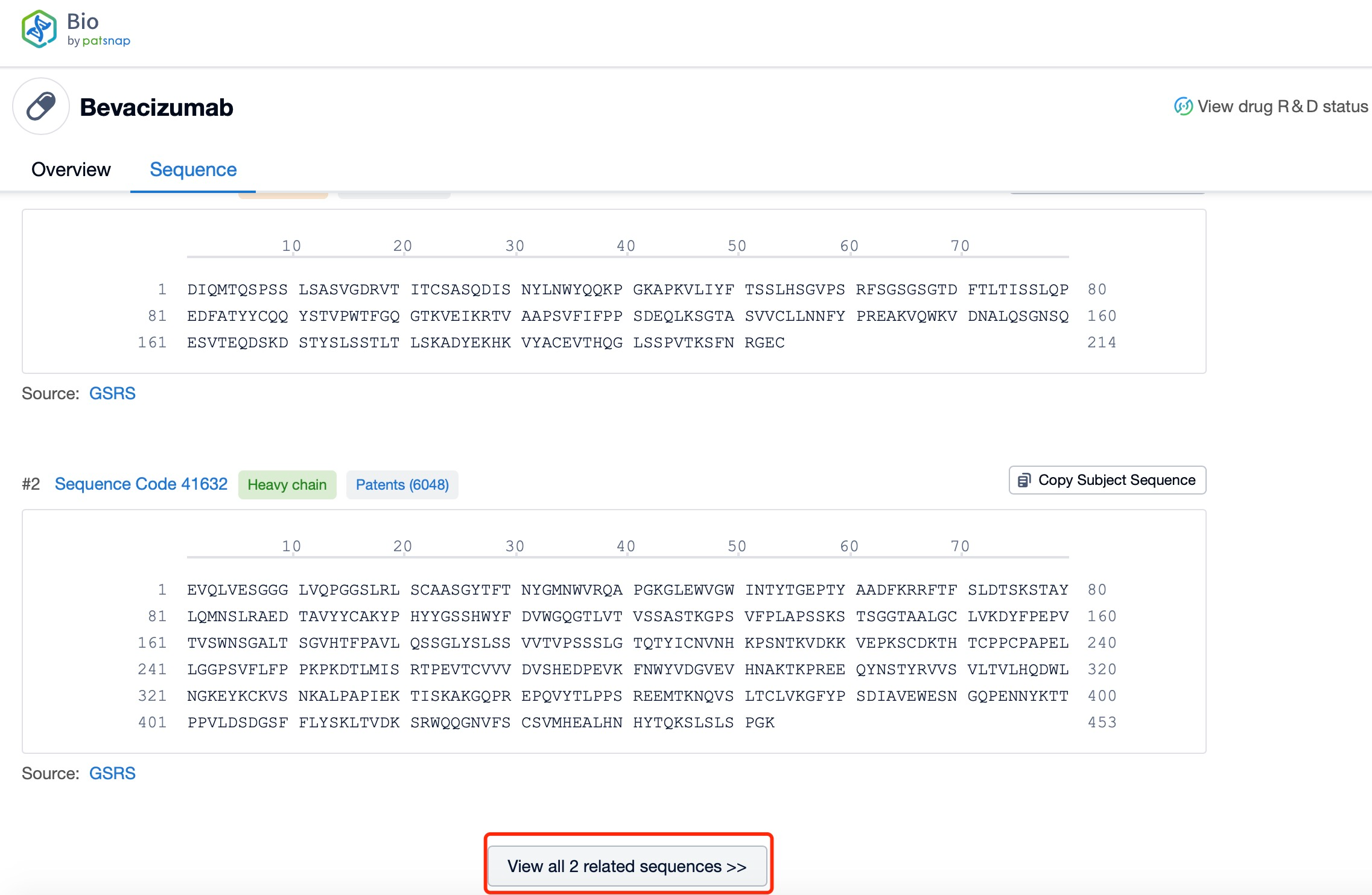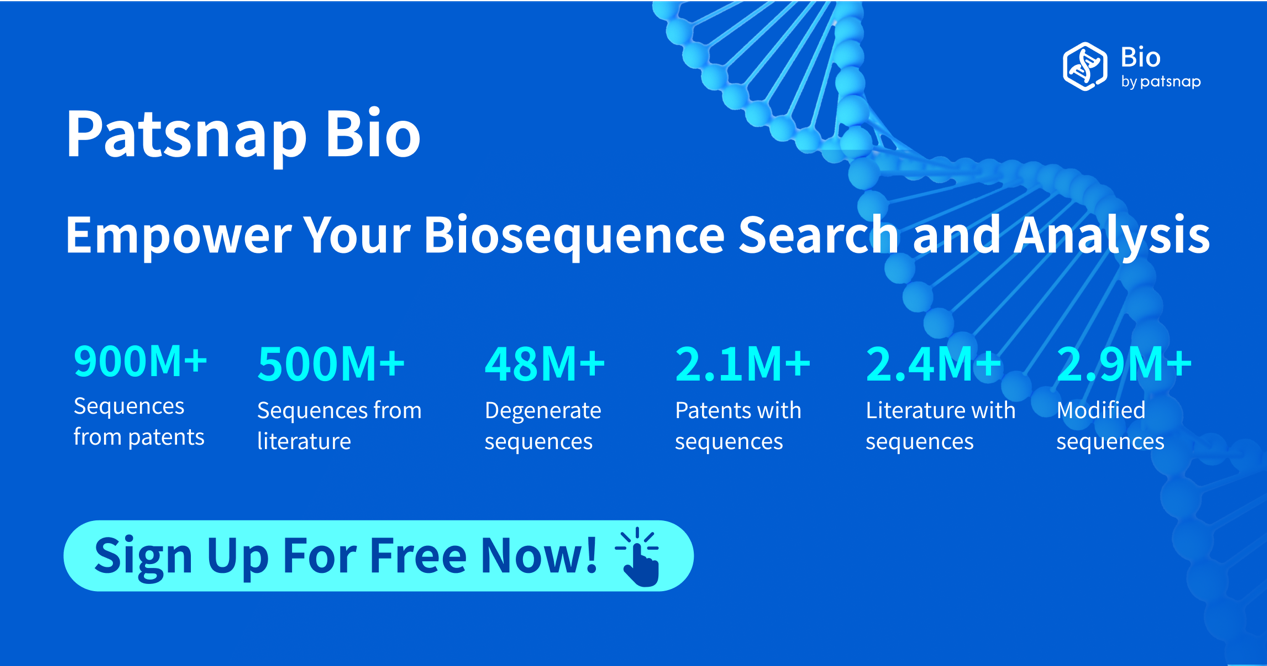How to find the structure and classification of Avastin?
Avastin, also known as bevacizumab, is a monoclonal antibody developed by Genentech, a subsidiary of Roche. It targets vascular endothelial growth factor (VEGF), a key mediator of angiogenesis, the process by which new blood vessels form. Avastin is classified as a recombinant humanized monoclonal antibody and is primarily indicated for the treatment of various cancers, including colorectal cancer, non-small cell lung cancer, glioblastoma, renal cell carcinoma, cervical cancer, and ovarian cancer.
Summary of Research Progress
The research progress of Avastin has been significant, with extensive studies elucidating its mechanism of action and clinical efficacy. Avastin works by binding to VEGF, preventing it from interacting with its receptors on the surface of endothelial cells. This inhibition blocks the formation of new blood vessels, which are essential for tumor growth and metastasis. By starving tumors of the nutrients and oxygen they need, Avastin can slow down or halt tumor progression.
Globally, Avastin has been approved in numerous countries, including the United States, Europe, and Japan. It received FDA approval in 2004 for the treatment of metastatic colorectal cancer and has since gained approvals for additional indications. The drug has also been approved in many other regions, making it a widely used therapeutic agent in oncology.
The competitive landscape for Avastin is intense, with several other anti-angiogenic drugs and targeted therapies available. Key competitors include cetuximab (Erbitux), ramucirumab (Cyramza), and regorafenib (Stivarga). Despite this competition, Avastin has maintained a strong market presence due to its well-established efficacy and safety profile. Clinical trials have consistently shown that Avastin, when used in combination with chemotherapy, can significantly improve patient outcomes, including overall survival and progression-free survival.
Type of Immunoglobulin of Avastin
Avastin is a humanized IgG1κ immunoglobulin. IgG1 is the most abundant subclass of immunoglobulins in human serum and is known for its ability to mediate various effector functions, including complement activation and antibody-dependent cell-mediated cytotoxicity (ADCC). The κ light chain is one of the two types of light chains found in immunoglobulins, the other being λ. The κ light chain is more common and provides stability and specificity to the antibody structure.
Light and Heavy Chains and Structural Characteristics of Avastin
The heavy chain of Avastin is a humanized IgG1 molecule, which consists of four domains: variable (VH), constant 1 (CH1), constant 2 (CH2), and constant 3 (CH3). The VH domain is responsible for antigen binding, while the CH1 domain forms part of the Fc region, which is crucial for the antibody's effector functions. The CH2 and CH3 domains are involved in the interaction with Fc receptors and complement proteins, respectively.
The light chain of Avastin is a κ chain, which also consists of two domains: variable (VL) and constant (CL). The VL domain pairs with the VH domain to form the antigen-binding site, ensuring high specificity and affinity for the target antigen. The CL domain, like the CH1 domain, contributes to the stability and function of the antibody.
Structurally, Avastin is a well-characterized and highly specific monoclonal antibody. The variable regions of both the heavy and light chains are designed to recognize and bind to VEGF with high affinity. This binding prevents VEGF from interacting with its receptors, effectively blocking the downstream signaling pathways that promote angiogenesis and tumor growth.
The constant regions of the heavy and light chains provide additional functional properties to Avastin. The Fc region, composed of the CH2 and CH3 domains, is capable of engaging Fc receptors on immune cells, leading to various effector functions such as ADCC and complement-dependent cytotoxicity (CDC). These functions enhance the therapeutic potential of Avastin by facilitating the clearance of targeted cells and modulating the immune response.
Summary and Prospect
In summary, Avastin is a humanized monoclonal antibody that targets vascular endothelial growth factor (VEGF), a key mediator of angiogenesis. Its mechanism of action involves binding to VEGF and blocking its interaction with receptors on endothelial cells, thereby inhibiting the formation of new blood vessels and slowing tumor growth. Avastin has been approved globally for the treatment of various cancers, including colorectal cancer, non-small cell lung cancer, glioblastoma, renal cell carcinoma, cervical cancer, and ovarian cancer. Despite intense competition in the oncology market, Avastin has maintained a strong market presence due to its well-established efficacy and safety profile. As a humanized IgG1κ immunoglobulin, Avastin exhibits well-defined structural characteristics that contribute to its high specificity and efficacy. The heavy and light chains, with their respective variable and constant domains, ensure precise antigen binding and robust effector functions, making Avastin a valuable and effective treatment for a range of cancers. Future research and development efforts will likely focus on optimizing its delivery methods, exploring new indications, and enhancing its therapeutic benefits for patients.
How to find the structure and classification of antibody drugs?
In Patsnap Bio, you can find the sequence and latest research and development advances of all antibody drugs.
Taking Avastin as an example, first click on the Drug/Gene Index on the Patsnap Bio homepage. Here you can search for sequence information by drug and gene names. Enter ' Avastin ' in the search box and click to view the details. On the details page, you can find the basic information and research progress of Avastin.
Click "View all related sequences" below the sequence information to search for and retrieve all biological sequences similar to this information.
Clicking on the sequence name will provide you with all the basic information of that sequence. Here, you can easily query the sequence and action of the light and light chains of antibodies.
Patsnap Bio helps you turn weeks into minutes with cutting-edge AI-enabled tools built to master the complexities of sequence retrieval and automate IP analysis with precision and ease.
